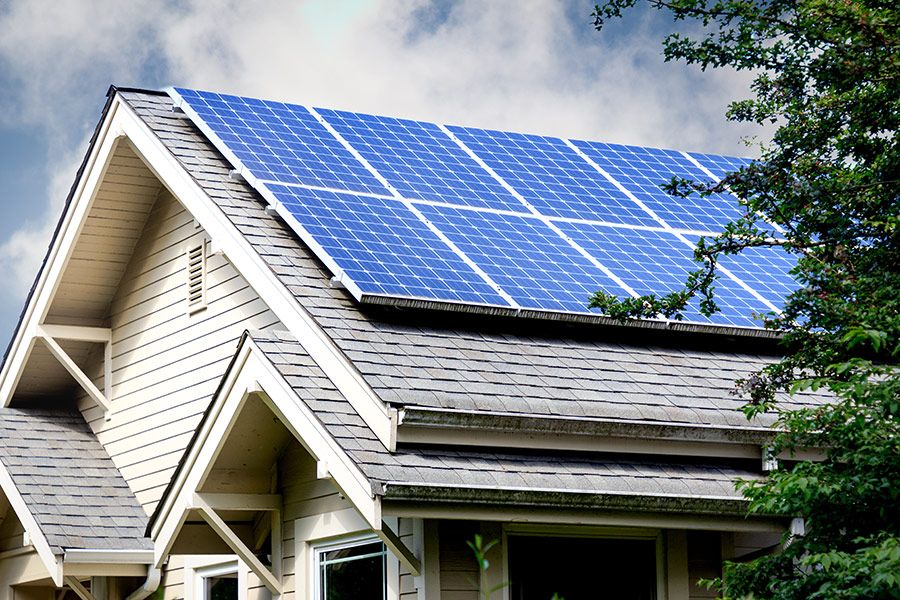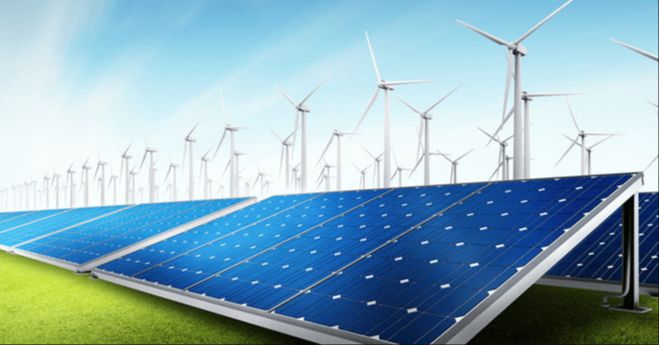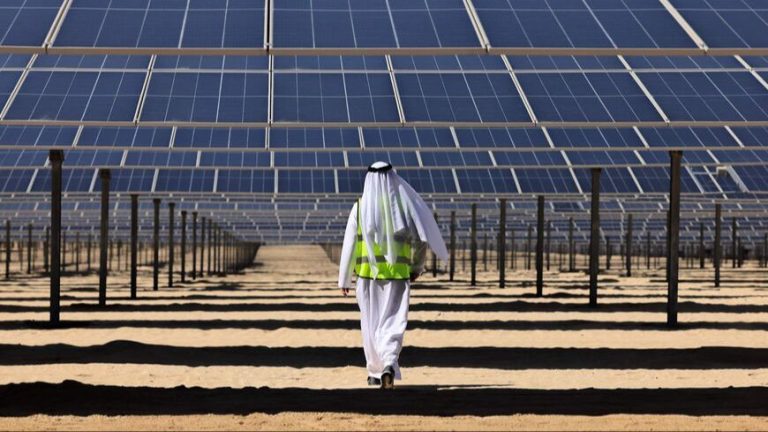How Many Kwh Per Day Is Normal For Solar?
Solar power harnesses energy from the sun and converts it into electricity through the use of photovoltaic (PV) panels. The panels contain solar cells made of materials like silicon that release electrons when exposed to sunlight, generating a flow of electricity. Understanding the typical solar output from PV systems is important for several reasons. Knowing expected output levels helps homeowners determine what size solar installation to install to meet their energy needs. It also assists utility companies in integrating solar power into the grid. Additionally, understanding factors that impact output allows solar panel owners to maximize their system’s production.
Typical Home Energy Use
The typical American home uses around 30 kWh of electricity per day. This usage is spread across various appliances and devices (source). The major energy consuming appliances in a home are:
- Heating and cooling – 45-50% of energy use
- Water heating – 12% of energy use
- Lighting – 9-12% of energy use
- Refrigerator – 8% of energy use
- Other appliances – 20% of energy use
For example, an air conditioner may use around 1.5 kWh per hour when running. With around 200 hours of use per month during summer, that’s 300 kWh per month just for A/C. In comparison, a typical 5 kW solar system in the U.S. produces around 6,000 kWh per year or 500 kWh per month (source). This demonstrates how solar output is generally on par with average home energy usage.
Factors That Affect Solar Output
There are several key factors that impact how much energy a solar panel system can generate, including:
- Location/Latitude – Solar panels produce more energy when they receive more direct sunlight. Locations closer to the equator typically get more sunlight and have higher solar output. [1]
- Time of Year – Solar production varies by season, with peak output occurring in the summer months. Output can decrease by 50% or more in winter for many regions. [2]
- Weather – Overcast skies, rain, snow, and other inclement weather can significantly reduce solar output on any given day. Panels covered in snow may produce almost no energy.
- System Size/Efficiency – Larger solar arrays with higer efficiency panels will naturally produce more electricity than smaller, lower efficiency systems. Newer solar panels tend to be more efficient as technology improves.

Understanding how these factors impact solar production can help homeowners and businesses estimate the potential output for a system in their area. Proper solar panel orientation and minimal shading are also key for maximizing solar panel productivity.
Typical Solar System Sizes
For a typical residential home, solar panel systems usually range from 3-8 kW in size. Here is a breakdown of common system sizes and their estimated daily output:
- 3 kW system – Generates around 12 kWh per day
- 5 kW system – Generates around 20 kWh per day
- 6 kW system – Generates around 24 kWh per day
- 8 kW system – Generates around 32 kWh per day
As you can see, a larger solar system size directly translates into more energy production per day. The 5 kW system produces around 1.7 times more than the 3 kW system. Meanwhile, the 8 kW system generates 2.7 times more power than the 3 kW system.
When determining what size solar system to install, it’s important to closely analyze your home’s energy usage needs. Oversizing your system won’t provide more usable energy beyond what your home consumes. Meanwhile, an undersized system may not fully offset your home’s energy requirements.
Solar Output by Location
Solar output can vary significantly across different regions and locations based on latitude, weather patterns, and other factors. According to data from the National Renewable Energy Laboratory (NREL), solar resource maps show that the American Southwest region has the highest solar potential in the contiguous United States. States like Arizona, Nevada, New Mexico, and parts of California receive the most sunlight and have solar resources capable of generating over 7 kWh/m2/day.
In comparison, New England and the Pacific Northwest have lower solar potential due to their higher latitudes and cloudier climates. Maine, Vermont, and Washington only average between 3-4 kWh/m2/day. The sunny Southeast region has solar resources between 5-6 kWh/m2/day which also allow for productive solar installations.
Within a given region, specific locations can further optimize solar production based on panel positioning, shading, and local microclimates. But broadly speaking, the Southwest maximizes energy yield for solar panels while the Northeast sees the lowest production numbers.
Solar Output by Season
Solar output varies significantly between winter and summer seasons. According to a 2018 NBER working paper, solar output in California can be over 50% lower in the winter versus the summer [1]. This is primarily driven by two factors – the length of daytime hours and the angle of the sun.
During winter, there are fewer daylight hours for solar panels to produce energy. In parts of the U.S., winter days may have 8-9 hours of sunlight compared to 14-15 hours in the summer. The lower sun angle in the winter also leads to less direct sunlight reaching the panels. At higher latitudes, the winter sun is lower in the sky so its rays are more angled and spread out, reducing the solar intensity. Together, these effects mean solar panels will generate significantly less energy in the winter.
However, the specific reduction in solar output depends on location. One California PUC study found winter solar generation was 35-60% of summer output in most utility territories [2]. More southern locations like Florida and Texas see less seasonal variation than northern states. But broadly, solar output drops during short winter days versus long summer days.
Average Solar Output
On average, a typical residential solar panel system will produce between 3-8 kilowatt-hours (kWh) of electricity per day. This can vary greatly depending on the size of the solar panel system, location, weather, and other factors.
For a small 2-3 kW solar system with around 10 panels, you can expect around 6-8 kWh of production per day on average. For a medium 4-6 kW system with around 16 panels, the average is typically 8-12 kWh per day. Large solar systems over 6 kW with 20+ panels will produce 12-16 kWh or more per day on average.
Monthly solar production ranges from around 180-240 kWh for small systems, 240-360 kWh for medium systems, and 360-480 kWh+ for large residential systems. The average US home uses around 30 kWh of electricity per day, or 900 kWh per month. So a properly-sized solar system can offset 50-100% of a household’s electricity usage.
Output varies greatly by location and climate as well. The sunniest states like California, Arizona, and Florida will produce up to 30% more than the shadier northeastern states. Production is also higher in the summer vs. winter months, with solar panels generating around 10-25% more electricity in the summer on average.
Maximizing Solar Output
There are several strategies homeowners can use to maximize the output of their solar panel systems:
Optimize panel orientation – Solar panels should be oriented to face due south if possible. This allows them to receive the most direct sunlight throughout the day. According to Energy Theory, south-facing solar panels can generate up to 40% more energy than other orientations.
Use solar tracking mounts – Mounts that allow solar panels to track the sun’s movement throughout the day can boost output by 20-30%. However, these systems tend to be more complex and expensive. Simple seasonal tilt adjustments provide some increased output at a lower cost.
Keep panels clean – Dirt, dust, snow, leaves and bird droppings can all diminish solar panel output. Periodically cleaning panels can maintain peak performance. Some systems have automated panel washing capabilities.
Trim overhanging trees – Trees or other nearby objects that shade panels during peak sun hours should be trimmed back to allow maximum light exposure. According to ReenergizeCO, shading just 10% of a panel’s surface can reduce output by over 50%.
Upgrade equipment – Using microinverters instead of central inverters, higher efficiency panels, and optimized system monitoring can help maximize solar output. Consult with installers to identify upgrades that provide the best return on investment.
With strategic equipment upgrades, proper orientation and some basic maintenance, homeowners can optimize their solar panel systems to generate maximum clean energy throughout the year.
New Solar Technology
Solar technology is continuously evolving, with new innovations aimed at improving efficiency and lowering costs. One of the most promising new technologies is perovskite tandem solar cells. These combine perovskite solar cells with traditional silicon cells, allowing the capture of a broader range of light wavelengths. According to the Massachusetts Institute of Technology’s Technology Review, this combination could boost efficiency from the current 26% limit for silicon cells alone to over 45%. Another report in Nature notes that adding a perovskite cell to silicon has the potential to produce 25-50% more power.
Researchers project that perovskite tandem solar cells could achieve efficiencies above 30% in commercial products by 2026. With continuing innovation, efficiencies approaching 50% may become possible within the next decade. These substantial leaps in efficiency would enable solar modules to produce dramatically more electricity from the same footprint. Such innovations promise to help solar energy become an ever more cost-effective and widespread source of renewable power.
Conclusion
When estimating your average daily solar production, there are several key factors to consider. The size of your solar system, the efficiency of the panels, your geographical location, local weather patterns, and seasonal changes in sunlight hours will all impact your system’s output.
For a typical residential solar system in the U.S., you can expect an average daily production of 20-30 kWh per day. This can vary widely though based on your specific circumstances. Larger systems, high-efficiency panels, and optimal solar conditions can produce up to 50 kWh per day, while smaller systems in less sunny areas may only produce 10-15 kWh per day on average.
Understanding your own system’s expected production will help you estimate potential bill savings and payback period. Monitoring your actual production with solar monitoring software can also help you identify ways to maximize your solar output through maintaining clean panels and ideal angles.
As solar technology continues to advance, average outputs are likely to increase. But for now, a good rule of thumb is to expect an average of 3-5 peak sunlight hours per day, and system production of 20-30 kWh for a typical 6-8 kW residential system in the continental U.S.







